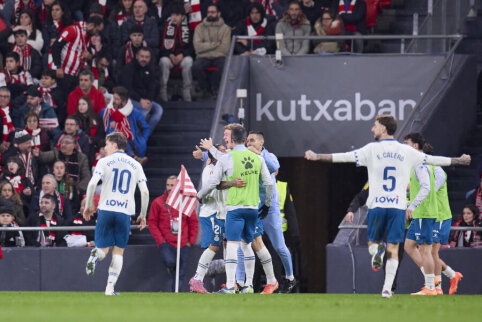 © EuroFootball.com
© EuroFootball.com
According to the Thursday supplement of "Lietuvos rytas", the capital's residents will have a national stadium on the Šeškinė hill by 2009, which will most likely be named the Millennium Stadium.
According to "Sostinė", the city authorities have decided to build a stadium in just over two years, with a capacity of 25 thousand spectators. Although recently they claimed it would be impossible to build the stadium by 2009, officials have now changed their minds and decided to tackle the project with determination.
According to the program for the national stadium, a technical project for the arena is expected to be prepared by the end of this year. The basis for this project will be the design created by architect Algimantas Nasvytis back in 1988.
The decision to complete the stadium, which was designed during the Soviet era, was not made due to football, but rather because in 2009, when Lithuania celebrates its millennium anniversary and becomes the European Capital of Culture, such a large arena will be needed for the participants of the World Lithuanian Youth Song Festival Dance Day.
The city will not only use drawings from 19 years ago but also concepts created abroad for the stadium. The visions of the arena were independently developed by the British company "Sport Concepts", and the design concept was prepared by the Canadian architects' firm BBB on behalf of the municipality. The city also plans to involve foreign specialists who have experience in building such facilities.
According to the article, the construction of the stadium is planned to be divided into two stages. Firstly, by the summer of 2009, the priority will be to urgently build the arena, which will be used for not only football but also have running tracks. Then, the plan is to establish a commercial sports center with a multi-purpose sports hall, swimming pool, training center, sports medicine clinic, one indoor football field, two separate sports fields, tennis courts, and basketball courts.
The government has granted national importance status to the Šeškinė stadium and has already allocated 2 million litas for preparatory work. It is estimated that building the main stadium will require 120-130 million litas, which it is hoped will be raised once construction begins.
The stadium construction, which began in 1985, was supposed to become the country's main stadium accommodating 30 thousand spectators - almost twice as many as the "Žalgiris" stadium. However, construction stalled in 1993 when funding was cut off. By that time, the underground part of the stadium arena had been built, concrete pillars had been poured, and construction of the upper part of the arena had begun. Experts claim that the condition of these structures is still good, as corrosion-resistant concrete was used in construction and the open steel structures were also properly preserved.























